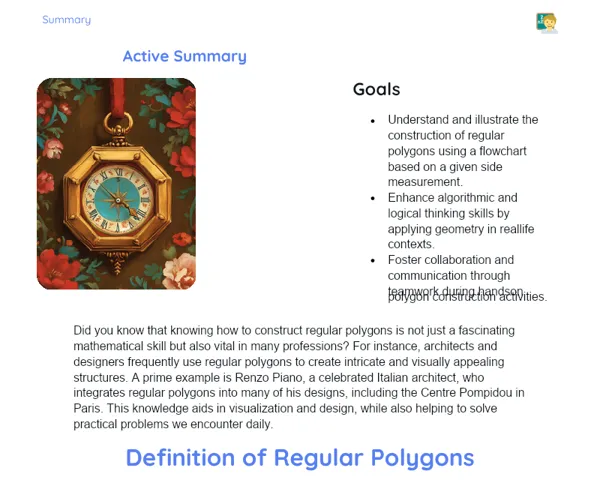Socioemotional Summary Conclusion
Goals
1. 🎯 Recognise and solve first-degree equations.
2. 🎯 Formulate and solve first-degree equations from everyday scenarios.
Contextualization
Did you know that first-degree equations aren’t just dry formulas from a textbook? They are really handy tools that come into play in our daily lives! For instance, you might work out how much money you need to save each month for that new gadget you’ve been eyeing, or plan a family outing by fairly splitting the expenses. Let’s explore together how these equations can make our everyday challenges much simpler!
Exercising Your Knowledge
Definition of First-Degree Equation
A first-degree equation is a basic mathematical statement that involves a variable raised to the power of one. It is the foundation for solving both everyday and academic problems. The general structure is ax + b = 0, where a and b are real numbers and importantly, a ≠ 0. 🧠❤️
-
A first-degree equation is structured as
ax + b = 0. -
It features a variable raised to the first power.
-
It is crucial that
ais not zero (a ≠ 0).
Isolating the Variable
Isolating the variable is the method of rearranging the equation so that the variable stands alone on one side. This step allows us to work out the value of the unknown. 🎯✍️
-
Add or subtract terms on both sides to isolate the variable.
-
Multiply or divide both sides by the same number.
-
The aim is to have the variable on its own, making it easier to compute its value.
Solution Verification
After calculating the value of the variable, it is important to check if the solution is correct by plugging it back into the original equation. This final step confirms the accuracy of your work. ✅🔍
-
Replace the variable with the computed value in the original equation.
-
Ensure that both sides of the equation balance.
-
Verification helps in identifying any mistake that might have occurred during the process.
Key Terms
-
First-Degree Equation: A mathematical statement with a variable raised to the first power.
-
Variable: A symbol, usually a letter, representing an unknown quantity.
-
Isolating the Variable: The practice of rearranging the equation to determine the value of the variable.
-
Verification: The process of ensuring the obtained solution is correct by substituting it back into the equation.
For Reflection
-
How do you feel the first time you crack a first-degree equation? Which emotions did you experience during the process?
-
Think of a real-life scenario where a first-degree equation might come in handy. How does this affect your view of mathematics?
-
Reflect on instances where you found solving an equation challenging. What strategies did you use to overcome these difficulties?
Important Conclusions
-
🔹 First-degree equations are essential for solving practical problems like budgeting and expense calculation.
-
🔹 Working through these equations helps build important skills such as logical reasoning, problem-solving, and persistence.
-
🔹 Applying first-degree equations in daily life encourages us to tackle challenges methodically, enhancing both our intellectual and emotional growth.
Impacts on Society
First-degree equations make a significant impact in today’s world. They not only assist with financial planning and budgeting but are also pivotal in fields like engineering, computer science, and economics. Consider an engineer calculating stress on a bridge or an economist crafting financial forecasts – they both rely on these equations for precision and reliability.
On a personal level, mastering these equations enables you to make well-informed and responsible decisions, whether that’s managing household expenses or planning a personal project. The satisfaction of solving these problems not only boosts your confidence but also prepares you to take on further academic and real-life challenges.
Dealing with Emotions
Let’s try a simple exercise using the RULER method for our journey with first-degree equations. Begin by recognising the emotions you experienced during the lesson – be it frustration, satisfaction, or anxiety. Next, understand what triggered these feelings; perhaps a particularly tricky problem was the reason. Then, name these emotions accurately. Share your feelings with a friend or note them in a journal. Finally, consistently practice methods like deep breathing or taking short breaks to manage these emotions. This approach will help you remain calm and focused as you tackle new mathematical challenges.
Study Tips
-
📚 Regular practice with various first-degree equations can make a big difference.
-
🎯 Try using educational apps or games that incorporate equation solving to keep learning engaging.
-
🗣️ Form study groups with your peers to discuss and solve problems together. Collaborative learning can often make the process more enjoyable and effective!



